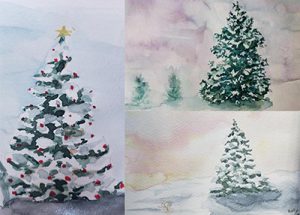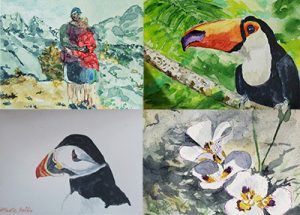Hobbies Help Us Recreate Ourselves in Times of Change
Written by |

I’ve been thinking a lot about growth lately. And about how even as we grow up and find out who we are, we never stop changing.
It can be hard to face change or to reinvent yourself when you are comfortable with who you’ve become. In the last year, whether we like it or not, we have all had to do a bit of reimagining.
The pandemic has forced us to pivot, redirect, and reinvent ourselves. Whether in small or large ways, none of us have survived this year without making changes in our lives. Whether it’s changing routines, pausing social engagements, working from home, or deciding to retire, daily life has looked different for each of us.
The pandemic has had effects on many people that might be described as “growing pains.” Increased alone time may have forced us to face issues we might have otherwise ignored within ourselves and in our relationships. We may have had to find new words to describe ourselves. We may have questioned the meaning of words like “successful,” “outgoing,” and “adventurous” when the spread of the coronavirus altered both our work and play habits.
Most everyone has faced interpersonal and societal challenges over the last year. And all of us have struggled with loss and the surrender of things that once brought us joy. Chronically ill folks have had a slight advantage in how they’ve coped with the past year — though totally not a fun advantage — which is that they have practice dealing with unpleasant lifestyle changes and social isolation in the name of health.
As I have been thinking about the ways my friends and family have pivoted and grown through the past year, I started to wonder about ways that rare disease communities have dealt with these changes. Scrolling through the Pulmonary Fibrosis News Forums yesterday, I discovered a wonderful thread full of hobbies and projects that pulmonary fibrosis patients have taken up as their illness has progressed.
The sad truth about PF is that patients will slowly lose lung function, and therefore the ability to participate in more strenuous activities. While grieving the loss of activities like sports, hiking, and traveling can be painful, it seems that most patients fill in the gaps with enjoyable, low-key activities as their symptoms worsen.
Before the IPF exacerbation that left my mom, Holly, hospitalized for three months, she expressed that she wanted to get back into art. For Christmas that year, while she was in the ICU, I gave her an artist’s kit that I had assembled with watercolor paper and brushes. She has put it to good use in the two years since she received her lifesaving bilateral lung transplant.
During the pandemic, my mom stayed home to protect herself from COVID-19. She put her isolation time to good use and has honed her skills as a watercolor artist. She started by practicing with a woodland-themed watercolor lesson book. She also tuned in to watercolor lessons online and has learned the techniques well enough to create original works.
When I was reading through the forums, I noticed that many patients also have turned to artistic pursuits since their diagnosis. The list is long, but some forum members shared that they have taken up painting, photography, scale-model building, scrapbooking and paper craft, knitting, quilting, and other fabric and fiber arts, building sculptures, painting miniatures, building radios, and writing.
I was so impressed to see the creations of the forum members and read about what they have done in their free time since being diagnosed with a progressive illness.
And as far as reinventing ourselves in times of trial, the consensus seemed to be that focusing on new or rediscovered hobbies has improved everyone’s quality of life. One member expressed that getting sucked into an art project has allowed them to release the guilt of being unable to keep up with old responsibilities. They’ve been able to find joy in creation and learning.
In my ruminations about growing up and constantly changing, I am starting to think that the way to find happiness may always be to listen to your inner child. What does the kid inside of you need to be happy? How do you find joy when life challenges you? How can you fill the spaces left by losing something you loved to do but no longer can?
To me, it seems like the inner child knows best. Find creative outlets, and dedicate time to play. Most of all, be flexible and keep trying new things! We’re never too old to reimagine ourselves, learn new skills, or try out new hobbies.
If this year (or this illness) has given us anything, I hope it is the permission to explore and pursue what brings us joy. Life is too short to stay the same!
***
Note: Pulmonary Fibrosis News is strictly a news and information website about the disease. It does not provide medical advice, diagnosis, or treatment. This content is not intended to be a substitute for professional medical advice, diagnosis, or treatment. Always seek the advice of your physician or other qualified health provider with any questions you may have regarding a medical condition. Never disregard professional medical advice or delay in seeking it because of something you have read on this website. The opinions expressed in this column are not those of Pulmonary Fibrosis News or its parent company, Bionews, and are intended to spark discussion about issues pertaining to pulmonary fibrosis.









Tim Paul Ostrander
I have increased my photography since my diagnosis. Taking more risks since time is precious.